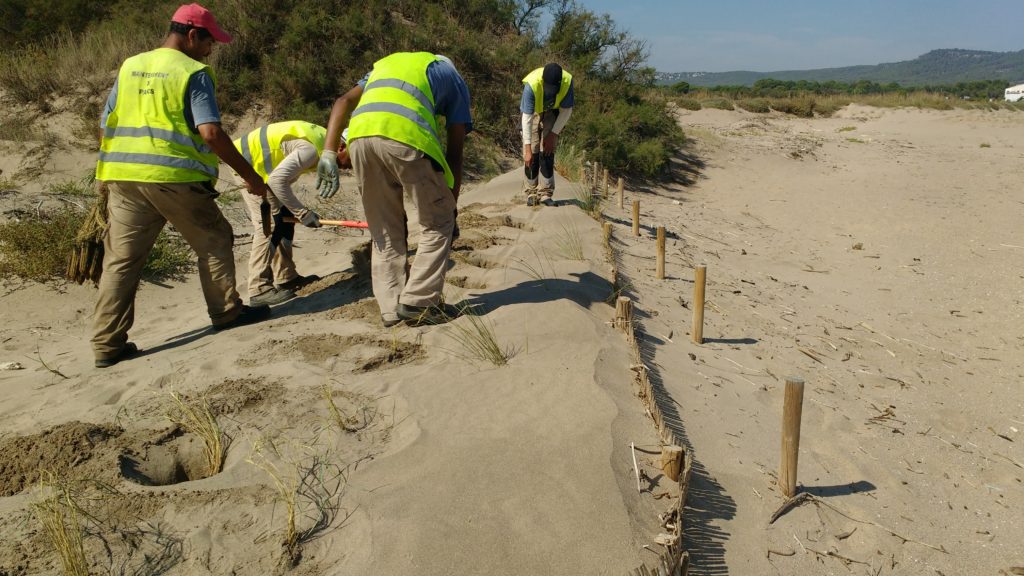Presentation of the Yearbook 2020 of the State of Protected Areas in Spain.
Cover of the Yearbook 2020 prepared within the framework of the ADAPTASALUDEA project, "Contribution of protected areas to adaptation to climate change, human health and environmental education for sustainability", developed with the support of the Biodiversity Foundation of the Ministry for the Ecological Transition and Demographic Challenge".
A reference document on the state of conservation of Spanish natural heritage
On December 15, the Fernando González Bernáldez Foundation – EUROPARC Spain presented in Madrid the Yearbook 2020 of the state of protected areas in Spain.
The report was prepared with the support of the Biodiversity Foundation of the Spanish Ministry for the Ecological Transition and the Demographic Challenge and within the framework of the ADAPTASALUDEA project. It presents the main advances in conservation of Protected Areas carried out in Spain to date, key information on the number of protected areas in this country and its conservation and management state. It also highlights relevant information on the main opportunities and challenges they present.
The Yearbook 2020 of the State of Protected Areas in Spain is available in Spanish here.
Spain and the Natura 2000 Network
According to the Yearbook 2020, Spain is the country that contributes with most land surface to the Natura 2000 Network, with more than 27% of its land area, having more than 80% of these areas approved management plans. In addition, Spain is the country with the greatest representation of biosphere reserves in the world, with a total of 53.
If the total of existing protected areas in this country is taken into account, Spain has 36.2% of its land surface and 12.3% of its marine surface protected. This places the country in a favourable position to achieve the European conservation objectives established in the Biodiversity Strategy 2030, which proposes to achieve 30% protection of the total surface of our continent.
“Since 2019, 31 new protected natural areas have been declared in Spain”
Spain currently shelters 16 National Parks, 152 Natural Parks, 291 Natural Reserves, 359 Natural Monuments, 61 Protected Landscapes and 2 Marine Protected Areas. Additionally, 800 natural spaces are designated under different figures developed by the chartered communities of the country.

Parc natural del Montgrí, les Illes Medes i el BaixTer – Santi Perez
Challenges ahead
However, the document also emphasizes certain challenges for the conservation of the Spanish natural heritage, such as progressing towards a more effective Protected Area management in an increasingly complex context that requires reinforcing the available means to face the challenges of global change. Likewise, new emerging challenges originated by the COVID-19 pandemic have appeared, such as the visitor saturation in certain protected areas or the absence of visitors in others, which provides an opportunity to review the new needs for the management of public use. Finally, the existing need to ensure that an adaptive and efficient management of Protected Areas is implemented, which requires adequate materials, economic and human resources.
Management underway
The challenges of the future must be approached from experience and professional background. In this new edition of the Yearbook 2020, a section has been incorporated for the first time in which different experiences in Protected Areas are documented. This chapter includes a total of 13 inspiring experiences, nine initiatives that illustrate the role of Protected Areas against Climate Change and four experiences in which the benefits for human health and well-being derived from the adequate management of Protected Areas are valued.
The campaign Nuestros Espacios Protegidos
As a result of this report, the Global Nature Foundation, EUROPARC- Spain and the Ecotourism Association of Spain have launched the campaign Nuestros Espacios Protegidos – Our Protected Spaces in order to give visibility to this milestone, raise social awareness on the importance of maintaining and caring for these areas, and promote ecotourism as a tool for conserving biodiversity and contributing to local development.
More information about the campaign available in this video: